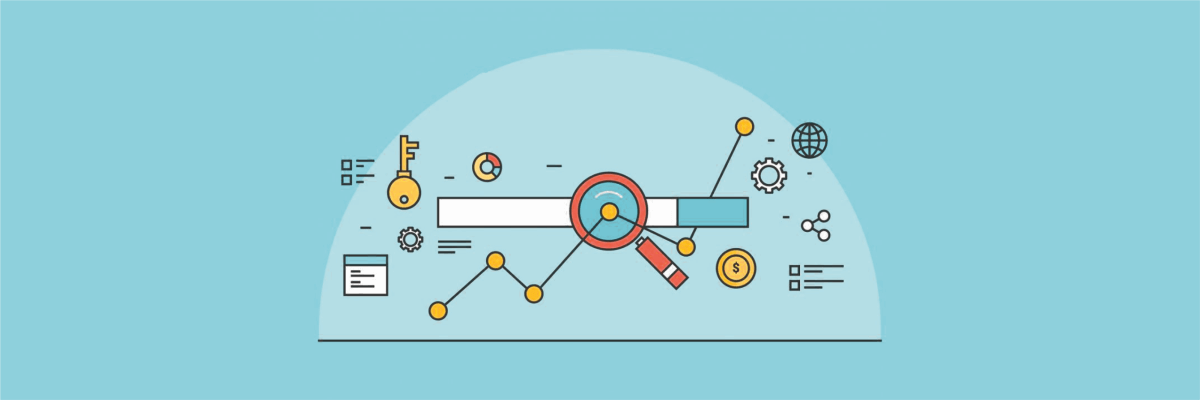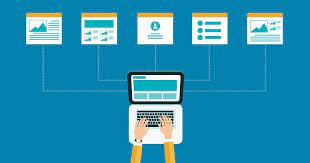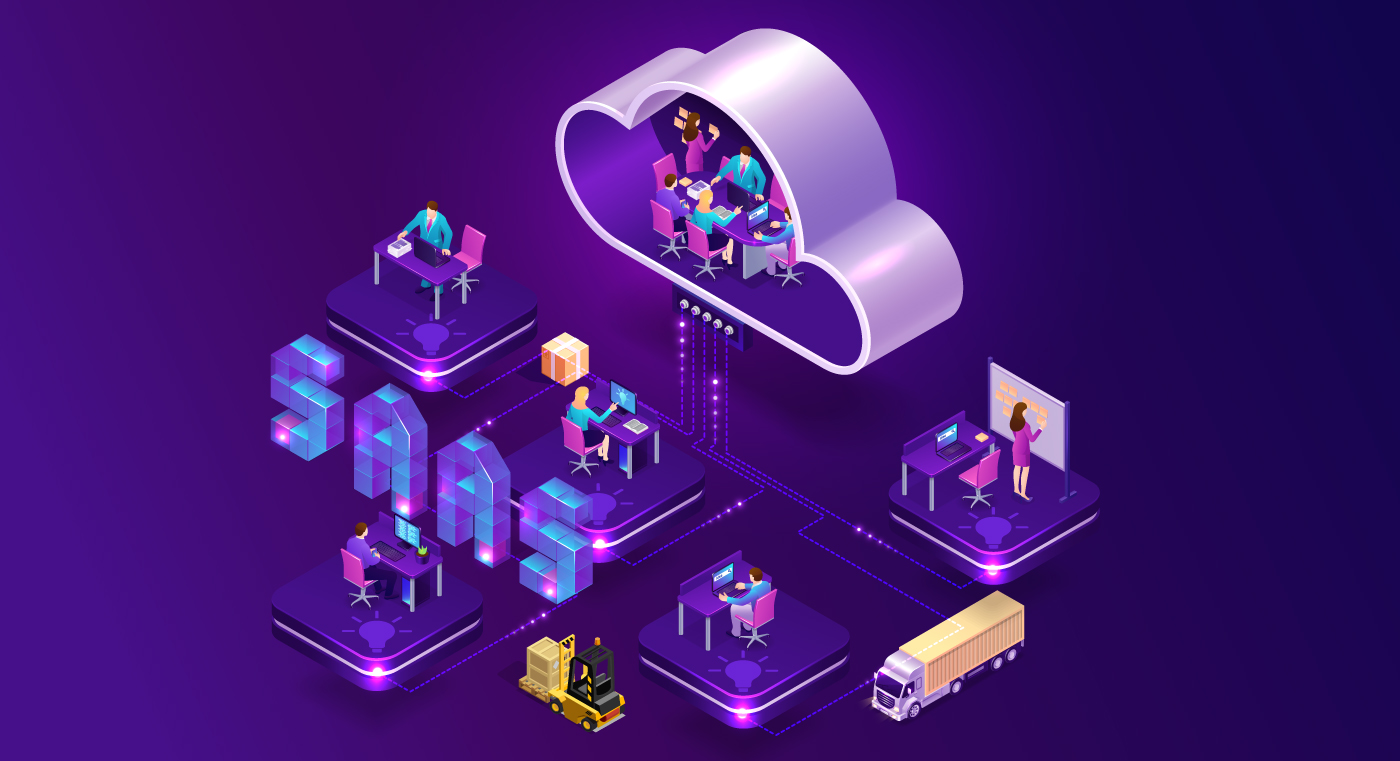Hello!
In 2022, the United States will have 17,000 software as a service (SaaS)companies, serving approximately 59 billion customers worldwide. These companies have one thing in common: the need to market their services to build their brand and generate leads.
 SaaS companies often have a compelling story to tell, an attractive product, and some clear-cut benefits of their subscription model. The question is: How to get the word out in a way that differentiates you from the competition and generates revenue?
SaaS companies often have a compelling story to tell, an attractive product, and some clear-cut benefits of their subscription model. The question is: How to get the word out in a way that differentiates you from the competition and generates revenue?
If you’re preparing to launch a SaaS service line or have an existing product where sales aren’t hitting the numbers you need, this SaaS marketing strategies guide will give you actionable steps for SaaS lead generation to help you snag subscribers—and build your brand.
The State of SaaS Marketing and Why You Should Care
SaaS subscription services are so ubiquitous it’s hard to believe the model has only been around since 1999. Today, SaaS tools are the 800-pound gorillas of the tech world. You’ll find this model in almost every software service category, so much so that some competitive markets swim with many choices of similar products.
It was hard to believe just two decades ago we were buying software and installing it onto our computers – and nothing else.
 Physical copies of software was a model that worked perfectly well for some time, but there were inherent challenges to the paradigm, such as:
Physical copies of software was a model that worked perfectly well for some time, but there were inherent challenges to the paradigm, such as:
- Security issues requiring manual upgrades to keep the software secure.
- Often prohibitive upfront cost, particularly for smaller companies. As a result, startups often struggled to find a technological edge over their larger counterparts.
- Limited scalability of on-prem physical software tied to how many licensure/seats you were willing (or able) to buy.
- Availability of software limited to computers where they were installed (remember, there wasn’t a cloud in sight back then).
With the explosion of the internet, SaaS became a groundbreaking distribution model where a service provider hosts their platform in a remote data center. Customers pay for a subscription to use the software, accessing it securely through their internet connections.
 The benefits of SaaS have always included scalability, security, low cost, and convenience. The model allowed companies like Google, Apple, and Microsoft to pioneer SaaS options, then corner the market.
The benefits of SaaS have always included scalability, security, low cost, and convenience. The model allowed companies like Google, Apple, and Microsoft to pioneer SaaS options, then corner the market.
Over the past decade, SaaS has evolved into the leading solution for just about every software category you can imagine. It democratized an entire set of digital tools, allowing even the smallest companies to leverage enterprise-level software to run their businesses. Today, SaaS is the preferred model, spawning entirely new business categories.
 Now, you can purchase cloud subscription software with some attached outsourced services, too. For example:
Now, you can purchase cloud subscription software with some attached outsourced services, too. For example:
- You can put your technology infrastructure in the cloud with Infrastructure as a Service, or IaaS.
- Backend as a Service (BaaS) offers cloud storage that is particularly useful for streamlining developer production environments.
- Disaster Recovery as a Service (DRaaS) can store your entire network, applications, and infrastructure in the cloud. Should the unthinkable disaster happen to a physical location, your teams can hit the cloud and take up where they left off.
- The newest -aaS category is AlaaS, or Artificial Intelligence as a Service. Watch this one take off; predictions say the sector will hit $77 million by 2025.
These examples are just a tiny taste; there are at least 50 different types of SaaS models out there and more under development as we write this. No matter the SaaS, these companies face stiff competition to market and sell their products.
The question is, how can you create SaaS marketing strategies that cut through all this noise?
SaaS Marketing Strategies vs. SaaS Lead Generation—What’s the Difference?
 Let’s start with a definition of terms:
Let’s start with a definition of terms:
- SaaS marketing strategies are what drive general underlying awareness of your product.
- SaaS lead generation strategies encompass specific tasks to create customer engagement.
Think of it this way:
- SaaS marketing puts the hook in the water so the fish can see it.
- SaaS lead generation gets the hook in the fish’s mouth.
- Making a sale = reeling in the fish.
You need these three techniques to scale your SaaS product toward bigger market share.
SaaS marketing strategies can put you at the table when a potential customer has a business problem that your product can solve. But you may be at that table with several other SaaS vendors.
 You need to do something to differentiate yourself from the competitors in a way that gets your customer to raise their hands and say, “Yes, I want to hear what you have to offer.”
You need to do something to differentiate yourself from the competitors in a way that gets your customer to raise their hands and say, “Yes, I want to hear what you have to offer.”
Your goal is to market broadly to your target audience and narrow the funnel to ferret out the highest quality leads. These techniques must be trackable with replicable processes and results. There’s simply no way to scale them otherwise.
Using these techniques together means your sales reps waste zero time on unqualified prospects. It’s not always about quantity, but the quality of the generated leads that can put you over the top.
What it’s really about is retaining more of your existing customers than your competitors, stealing some of their clients, and then finding brand new market niches to reach more leads and sales. Can a good SaaS marketing and lead generation strategy do all that?
Absolutely.
The Challenge of SaaS Marketing and Lead Generation to Scale
The biggest challenge you face isn’t defining the customer anymore; it’s defining their journey. Before the internet, it was a straightforward customer journey to your product.
 They’d drive to their favorite big box store and buy your stuff. Now we have:
They’d drive to their favorite big box store and buy your stuff. Now we have:
- SMS communications
- Free trials
- Mobile online demos
- Social media
- Streaming ads
- Co-marketing
- Banners
- Webinars
- User-generated content
- And of course, online search — and more
Our SaaS marketing strategies for lead generation have grown more sophisticated in correlation to the number of digital channels your target audiences use. With all the channels available to find and buy your product, which ones yield the low-hanging fruit?
Which ones always seem to deliver warmer leads? Do you have to spend more to close more deals?
If you’re struggling to create your own SaaS marketing strategies that scale, you must first start with one simple yet complex process: First, know thy customer.
What Do Your Customers Want and What Do We Know About Their Journey?
 Creating a SaaS customer journey roadmap is just as critical as creating customer personas. Once you’ve mapped it, you can build marketing and lead generation strategies at each touchpoint in the journey.
Creating a SaaS customer journey roadmap is just as critical as creating customer personas. Once you’ve mapped it, you can build marketing and lead generation strategies at each touchpoint in the journey.
The SaaS customer journey should plan every desired move a potential customer takes from the first moment they come in contact with your brand to when the sale closes.
Each journey stage is perilous; a customer might keep moving along, or they walk away.
Your job is to keep them engaged until the end, nudging them along until they buy. We wish it were as simple as it sounds, but in the digital marketplace, there are a lot of distractions to steal them away from the path you want them on.
There are typically five stages of the SaaS customer journey
Evaluation and awareness of your brand. Because there are so many channels to get to your product, this interaction can occur from many directions. Typically, a search engine query or well-placed content leads them to your brand, but not always.
 Engagement with your brand. They look at your website, talk with a sales rep, or a chatbot, read a blog or two. They’re on the hook.
Engagement with your brand. They look at your website, talk with a sales rep, or a chatbot, read a blog or two. They’re on the hook.
Evaluation occurs in the form of a demo or a free trial. Perhaps the prospect watches a tutorial, talks to a customer reference, or reads an online review.
Purchase and onboarding are the conversions you’re seeking. Hopefully, the deployment goes well, and the customer moves to the final stage.
Account growth and advocacy is the final stage of the customer journey. It’s a self-replicating process where you do your best to retain the customer for the long haul.
Perhaps they upsell or refer you to a new client. Maybe they participate in a case study or write a positive review.
This cycle is not linear in many cases. It is the wild west internet, and just as fast as you can say, “Squirrel!” the prospect may go in a different direction and drop off your roadmap.
Creating a SaaS customer journey roadmap unique to your product will help you understand all the critical touchpoints that you need to hit to keep the customer moving toward step four.
 To create your roadmap, you must:
To create your roadmap, you must:
- Create customer personas based on the average profile of a decision maker that buys your product.
- Understand the marketing channels the customer used to engage with your brand before purchasing. You’re looking for commonalities between customers so that an “average” or “typical” series of steps begins to emerge.
- To do this, analyze any conversion or engagement data that you have available. Interviewing customers to gain direct feedback and conducting polls is just as important as the analytics you review.
- Plot each stage of the journey. Look for possible friction points where it’s more likely that you could lose the prospect before they make it to the next stage in the journey toward your product.
- Overlay a SaaS marketing and lead generation plan that optimizes their journey with the right interactions at the right time.
- Don’t stop at step 4, either. Have a plan for asking for a referral or an online review. Offer a customer retention bonus. Create a marketing plan for customer engagement, satisfaction, and even upselling them into additional SaaS products.
Defining the customer and revisiting their current digital buying journey leads us to actionable strategies to capture and convert them. Let’s start with three proven marketing strategies that are “must haves” for any SaaS company.
3 Tried and True SaaS Marketing Strategies
While every SaaS product has slightly different features geared for specific and unique audiences, some marketing and lead generation strategies just work with the subscription service model.
 To create your own SaaS marketing strategies, you benefit from all those vendors who paved the way. Here are some of the generally accepted best SaaS marketing practices that can help build a brand:
To create your own SaaS marketing strategies, you benefit from all those vendors who paved the way. Here are some of the generally accepted best SaaS marketing practices that can help build a brand:
- SaaS SEO
Don’t groan; search engine optimization can work, but it’s as complex and customized as a line of Python code. At its best, SaaS SEO can increase the organic traffic to your website or a landing page. At its worst, it is a time and money suck where, frankly, it’s easy to miss the boat.
The key is that you cannot rely solely on paid acquisition because, if you run out of budget, you turn off that faucet completely. However, SaaS SEO as a solo strategy will not scale your product or your company for the long term. You need SEO, but also other SaaS marketing and lead generation strategies.
So, what else works?
- Content, content, content
- Content is the peanut butter on the SEO sammich. In other words. SEO success is tied firmly to great content. (Yes, keywords, too.) To outflank your competitors, you must create more engaging content that matters to your clients. Whether your SaaS product is B2B or B2C, if you don’t have a keen grasp on the customer journey to your product you lose. Your goal should be to analyze the search intent of your customers.
 Ask yourselves questions like:
Ask yourselves questions like: - What’s the pain point (there could be more than one) that drives your prospect to do an online search to find someone like you?
- How does your product solve the prospect’s problem?
- What are the search terms they use to find you?
- Content is the peanut butter on the SEO sammich. In other words. SEO success is tied firmly to great content. (Yes, keywords, too.) To outflank your competitors, you must create more engaging content that matters to your clients. Whether your SaaS product is B2B or B2C, if you don’t have a keen grasp on the customer journey to your product you lose. Your goal should be to analyze the search intent of your customers.
Then and only then can you create meaningful content in the channels and formats they appreciate and respond to. The bottom line? Start with the prospect and their needs, wants, and priorities and build content to engage them.
- Retargeting
- Retargeting is necessary for a digital environment where your SaaS product may face massive competition. This behind-the-scenes process uses automation to track website visits and then follow them around the web to other sites, displaying your advertising there and staying top of mind.
 Ecommerce sites have taught us much about using retargeting to offer contextual offers to bring back those clients that hit your site and ran away. Retargeting software has grown more sophisticated over the years.
Ecommerce sites have taught us much about using retargeting to offer contextual offers to bring back those clients that hit your site and ran away. Retargeting software has grown more sophisticated over the years.
You can trigger it to tag and follow the client when they hit your website, but also open an email, sign up for an eBook, or attend a webinar.
You can even use retargeting tools to target other potential customers with similar characteristics to your website visitors, but who haven’t found you yet. Since SaaS has a long customer buying journey, retargeting is a smart way to keep popping up in front of the customer to establish credibility and stay top of mind as your “target” meanders their way around the web.
While these are just three of the most common SaaS marketing strategies, software vendors are getting savvier in their approach to reaching customers. Here are some of the newer strategies that we think will scale nicely in the coming years.
Two Newer SaaS Marketing Strategies to Pay Attention To
In the past, SaaS marketers threw everything but the kitchen sink at their sales conversion goals. The industry has since grown much more sophisticated in our approach, as evidenced by some of the newer SaaS marketing strategies that are clearly scalable and growing in popularity.
 This includes:
This includes:
- User-focused communities
- Everyone is a do-it-yourselfer these days. In the SaaS world, this DIY mentality translates to tools that allow them to troubleshoot their product without asking for help from a support rep. Many SaaS companies now have online communities, videos, and Q&A pages that help you address the most common problems. But these user communities can also serve a marketing function.
For example, a user-focused community can also be more industry-focused. If you have a SaaS healthcare product. maybe you have a user group for hospitals. The point is that you engage customers and prospects by creating a sort of user group umbrella that everyone naturally wants to huddle under.
- Everyone is a do-it-yourselfer these days. In the SaaS world, this DIY mentality translates to tools that allow them to troubleshoot their product without asking for help from a support rep. Many SaaS companies now have online communities, videos, and Q&A pages that help you address the most common problems. But these user communities can also serve a marketing function.
- Growth Loops
- A growth or acquisition loop uses your existing customers to generate more customers. We see this in product resell environments or even in referral programs. The idea is a self-perpetuating loop of customers that naturally leads you to more connections. A growth loop can cut your customer acquisition costs drastically. If each customer costs $100 to bring in and they lead you to another customer, it cuts that cost by 50%, and so on. It’s a compounding growth strategy that is imminently scalable. Some growth loop techniques beyond referrals and SaaS resellers include:
- Gamification features that promote word-of-mouth on social media.
- User-generated content where you share a video of your experience with the product.
 These SaaS marketing strategies seem both organic as well as effective. But, like all marketing initiatives, you need to emulate the plate spinner at the circus; once you have one marketing initiative engaging on all cylinders, it’s time to get another plate spinning.
These SaaS marketing strategies seem both organic as well as effective. But, like all marketing initiatives, you need to emulate the plate spinner at the circus; once you have one marketing initiative engaging on all cylinders, it’s time to get another plate spinning.
Lead generation strategies are must-have features for your SaaS marketing strategy. They can net you the low-hanging fruit faster than some of the other strategies we’ve outlined, but the truth is you need all of these techniques to succeed in today’s volatile SaaS world.
What About SaaS Lead Generation?
 There are all kinds of marketing challenges for SaaS lead generation. Competition is one, but the long sales cycle is another, along with the variety of channels found on the typical customer sales journey.
There are all kinds of marketing challenges for SaaS lead generation. Competition is one, but the long sales cycle is another, along with the variety of channels found on the typical customer sales journey.
However, the approach for SaaS lead generation is different because the result is more immediate. A warm, qualified SaaS lead closes faster than a generalized and potentially interested SaaS prospect at the beginning stages of getting to know you.
Here are two proven strategies for SaaS lead generation that can keep your sales team busy with qualified leads while your marketing team continues to chip away at those early-stage prospects.
Also read:
- Can every company be a FinTech?
- Understanding Co-browsing
- The Value of Accounting Software to Organizations
Conclusions
The SaaS product market is booming with no signs of slowing down. The challenges are the same for the SaaS marketer of an existing product or the fledgling as-a-Service startup entrepreneur. How can you harness the power of growth marketing techniques to brand, build, and sell your SaaS product?
Thank you!
Join us on social media!
See you!






